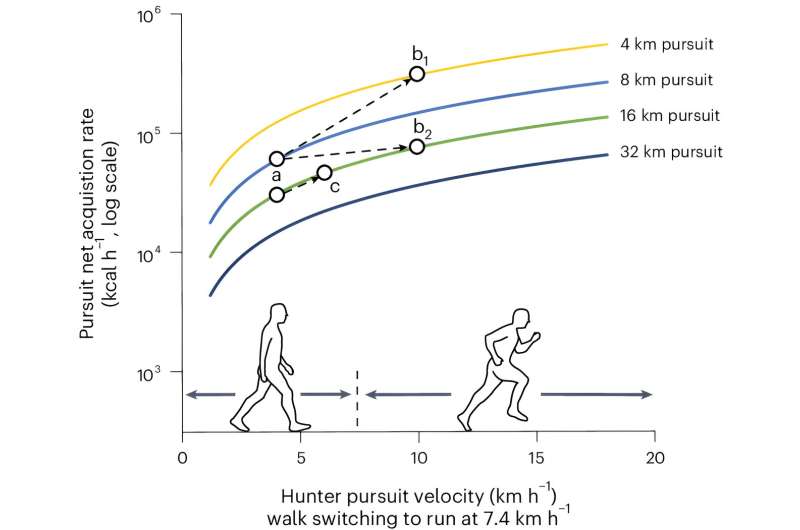May 14, 2024 report
This article has been reviewed according to Science X's editorial process and policies. Editors have highlighted the following attributes while ensuring the content's credibility:
fact-checked
peer-reviewed publication
trusted source
proofread
Study supports theory that humans evolved the ability to run long distances to capture prey

A pair of anthropologists, one with Trent University, in Canada, the other with the University of California, Davis, in the U.S., reports evidence in support of a theory that humans developed the ability to run long distances to capture fast-running animals.
In their study, published in the journal Nature Human Behavior, Eugène Morin and Bruce Winterhalder studied past research efforts into modern people that run down prey and also conducted new mathematical studies to assess the caloric payoff of such an exhausting approach to obtaining food.
The editors at Nature Human Behavior have published a Research Briefing outlining the work done by the pair in the same journal issue.
Prior study of animal anatomy suggests that humans are unique among mammals in two ways: They sweat and they have long leg muscles built for endurance rather than strength. Taken together, the two traits make long-distance running a relatively easy feat for humans.
Other animals, such as deer, bison and others, have bodies more suited to quick, short-distance running. The difference means that an average human being in running shape could catch a horse, deer or almost any other animal by pursuing it to exhaustion.
For many years, the endurance pursuit hypothesis has been widely dismissed due to lack of examples of humans using endurance hunting to chase down faster prey. The researchers suggest this is due to reports of such activity going mostly unnoticed.
To find out if the hypothesis has merit, the team conducted a two-pronged research effort. The first part involved digging through literature for examples of contemporary humans using endurance running to capture prey. They found approximately 400 reports, ranging in time from the 1500s to the 2000s, many of which were firsthand accounts.
They then attempted to determine whether running down prey is calorically sound—can a hunter obtain more calories by consuming an animal than were burned while running to capture it? They found that under the right conditions, the payoff would be more than enough to make the effort worthwhile—particularly if the running was mixed with occasional walking.
The researchers conclude that early humans could very well have used endurance running to chase down prey.
More information: Eugène Morin et al, Ethnography and ethnohistory support the efficiency of hunting through endurance running in humans, Nature Human Behaviour (2024). DOI: 10.1038/s41562-024-01876-x
Ethnohistorical analysis suggests that endurance running evolved with persistence hunting, Nature Human Behaviour (2024). DOI: 10.1038/s41562-024-01877-w
Journal information: Nature Human Behaviour
© 2024 Science X Network





















